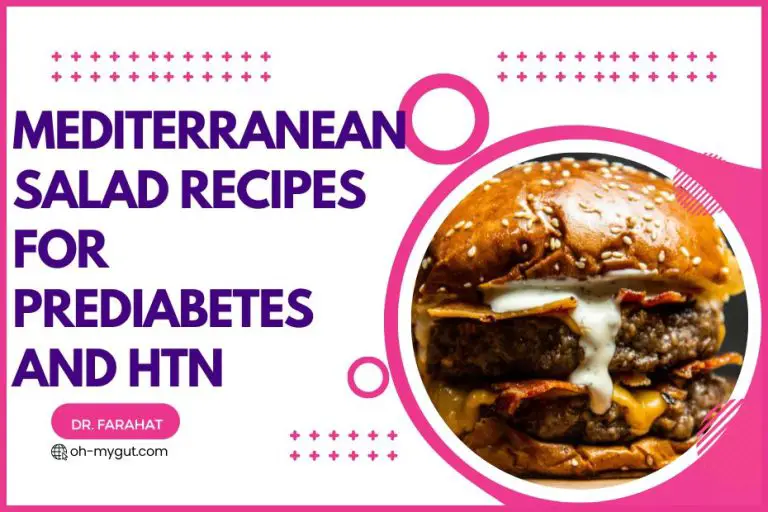Worst Foods To Avoid If Prediabetic (Doctor Explains)
Our content is not intended nor recommended as a substitute for medical advice by your doctor. Use for informational purposes only.
Hello everyone! Dr. Farahat here. Your recent labs may have whispered “prediabetes,” and now understanding which foods sabotage your balance is nonnegotiable.
Refined carbohydrates vanish on your tongue yet linger in your bloodstream, provoking sudden glucose surges. Drinks sweetened with sugar aren’t innocent either—they’re stealthy saboteurs that tip your levels sky‑high.
Red and processed meats are often touted for protein but can burden insulin’s work, and those crunchy fries or ultra‑processed snacks deliver fleeting pleasure at a metabolic price.
Fortunately, gentle swaps can be made—sometimes a single change rewrites your day.
Table Summary:
| Food Category | Examples to Avoid |
|---|---|
| Refined Carbohydrates | White bread, pastries, dinner rolls |
| Sugar‑Sweetened Beverages | Soda, sweetened iced tea, energy drinks |
| Red & Processed Meats | Bacon, hot dogs, salami |
| Fried Potatoes | French fries, potato chips |
| Saturated & Total Fats | Butter, lard, full‑fat cheese |
| Over‑Processed Foods | Packaged snacks, instant noodles, frozen meals |
General Golden Rule: Reduce Overall Calories to Achieve Energy Balance
Managing your calories is something that must be worked on and often is ignored until issues show up. The approach is both simple yet frequently complicated by habits that are hard to change. Here’s what can be done:
Plan Diverse Meals: Meals can be prepped ahead or tossed together quickly without fuss.
Mind Portions: Use smaller serving dishes and check quantities.
Snack Alternatives: Fresh produce or crunchy seeds are chosen to curb hunger.
A system of calorie control may often end up being the backbone of a smoother metabolic process, even if sometimes the idea seems too obvious to work. This method is not always perfectly executed, yet it offers a practical path.
Refined Carbohydrates
Refined carbohydrates, those processed grains and sugary treats, are notorious for sending glucose levels on a wild ride. A quick little tale might illustrate the risk: Once, a small town bakery was famed for its airy breads and pastries, but over time, the townsfolk noticed their energy would crash, leaving them jittery and tired.
The idea is to try new grains and wholesome alternatives:
Inspect Labels Thoroughly: Whole grains are usually seen, if not always chosen.
Switch Out Options: Brown rice, barley, and millet are sometime overlooked.
Home Cooking: When meals are prepared at home, control is maintained.
There is a balance that must be struck between convenience and quality, though methods are sometimes misunderstood.
Sugar-Sweetened Beverages
Sugary drinks are a real culprit when it comes to unexpected spikes in blood sugar. An interesting mix of formal advice and casual chatter goes this way: It’s often observed that kids and even grown-ups opt for soda, without realizing the hidden sugars. The remedy is not as hard as some believe:
Stick to Water: Flavored with natural slices if plain water tastes boring.
Choose Unsweetened Teas: Opting for these is both classy and effective.
Fruit-Infused Options: Small, natural hints of fruit can jazz up hydration.
While many try to maintain a fluid intake free from sugars, sometimes the allure of sweetened beverages causes lapses. A keen eye on labels can really help shift the habit.
Red And Processed Meat
There is an interesting contradiction here: On one hand, red meat is often prized for its flavor, yet it can pose challenges in a balanced diet. Imagine a busy deli known for its cured meats; over time, patrons started experiencing health problems linked to processed cuts. Now, consider these steps:
Reduce Frequency: Limit the number of meat-based meals in your schedule.
Seek Lean Cuts: The leaner the cut, the fewer the risks involved.
Embrace Alternatives: Plant proteins like beans or tofu are increasingly popular.
The method is occasionally criticized, but choices are made that prioritize long-term wellness over short-term gratification. Still, the conversation surrounding these options is ever-evolving.
Potatoes, Particularly French Fries
The love of crispy, deep-fried potatoes is widespread, though not always wise when blood sugar control is the aim. The approach here is mixed: sometimes casual, other times downright scientific. The evidence that fried potatoes spike blood sugar is solid, yet many are drawn to their crunchy charm. Try these adjustments:
Baking is Preferred: A lightly baked wedge can sometimes do the trick.
Alternate Veggies: Sweet potatoes or even roasted carrots can serve as substitutes.
Monitor the Serving: A small portion is a compromise between flavor and health.
While these tweaks might occasionally be overlooked, the changes can yield a less dramatic metabolic response over time.
Reduce Total And Saturated Fats
The dietary fats in our meals are a double-edged sword. Scientific studies have shown that saturated fats can worsen insulin responsiveness, though many indulge in rich meals regardless. The tips below are instrumental for those looking to make a measurable change:
Change the Fat Source: Butter can be replaced with other oils that are considered healthier.
Cooking Techniques Matter: Steaming and baking tend to be favored over frying.
Check Food Labels: The presence of hidden fats can be noted more easily with a careful eye.
By paying attention to fat intake, there is an improvement in cardiovascular health as well as sugar regulation. The strategies here are sometimes seen as basic and yet are critical for a balanced approach.
Overprocessed Foods
A curious case unfolds in the realm of overprocessed foods. There was once a community where convenience foods were the norm, and the overall health began to noticeably decline because additives and synthetic ingredients crept into almost every meal. The narrative isn’t dramatic, but it clearly warns of hidden dangers. Consider these pointers:
Emphasize Real Foods: Fresh produce and whole grains tend to take precedence.
Cook More Regularly: Home-cooked meals are often prepared with better ingredients.
Scrutinize the Ingredient List: A long list of unrecognizable items is usually a red flag.
Observations indicate that minimal processing can lead to better overall nutritional outcomes, even if sometimes the change is hard to implement given busy schedules.
Bonus: Lose Weight
Losing weight is viewed by many as a vital part of controlling prediabetes, and here’s a little narrative to illustrate: In a small village, a modest transformation in eating habits led to a gradual, yet noticeable, improvement in the community’s health, proving that every little bit counts. Recommendations include:
Balanced Meals Are Key: Incorporating proteins, grains, and plenty of greens is a must.
Physical Activity Benefits: While not all forms of exercise are intense, regular movement is beneficial.
Awareness and Adjustment: Keeping track of progress helps keep the momentum, even if it’s sometimes erratic.
A strategy designed to trim the waistline also complements improvements in insulin sensitivity and overall health. Every effort here is geared towards making weight loss a supportive component of better prediabetes management.
Bonus 2: Take Vitamin D
Vitamin D is a nutrient that plays a supporting role in metabolic balance, though many may be unaware of its subtle influence. The advice, presented in a mix of scholarly tone and relaxed language, is as follows:
Dietary Sources Matter: Foods that contain Vitamin D are recommended to be integrated into the daily regimen.
Consider Supplementation: If levels are low, taking a supplement is a common suggestion.
Monitor Levels Regularly: It is advised that regular testing can help manage this vital nutrient effectively.
Even when the subject is as technical as vitamin status, the blend of formal research and common practice offers a balanced perspective on how it contributes to daily health routines. A steady supply of this nutrient is associated with better overall outcomes, though the process of keeping track might be slightly tedious at times.
My References:
Prevention of Type 2 Diabetes Mellitus (UpToDate).
2018 UK Evidence-Based Nutrition Guidelines for the Prevention and Management of Diabetes Mellitus
- Evidence-based
- Written by a doctor.

Related Posts:
- 6 Worst Foods To Avoid With Hypertension (Doctor Explains)
- 7 Foods to Avoid With High Cholesterol (Doctor Explains)
- 10 Takeaway Foods to Eat with Gallstones (& What…
- 10 Powerful Foods Proven to Lower Cholesterol…
- 9 Scientifically Proven Foods to Enhance Your Gut…
- 11 Evidence-Based Foods To Lower Cholesterol Levels…





